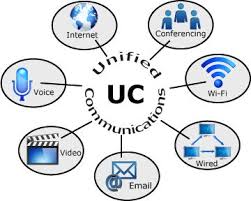The global enterprise communication market is seeing rapid changes with new technologies and solutions competing to provide anytime–anywhere–any device collaboration and communication convenience to their increasingly mobile workforce. This has led to the unification of previously disparate communication systems and the growth of the unified communication and collaboration (UC&C) solutions market.
For example, in June Microsoft Corp. and LinkedIn Corporation
announced they have entered into a definitive agreement that would leverage the other’s technology assets. Microsoft will acquire LinkedIn for $196 per share in an all-cash transaction valued at $26.2 billion, inclusive of LinkedIn’s net cash, according to the
news release.
LinkedIn will retain its distinct brand, culture and independence. Jeff Weiner will remain CEO of LinkedIn, reporting to Satya Nadella, CEO of Microsoft. Reid Hoffman, chairman of the board, co-founder and controlling shareholder of LinkedIn, and Weiner both fully support this transaction. The transaction is expected to close this calendar year.
According to BCC Research analyst Nandita Bhotika, the move signals her expectation that the global unified communication and collaboration market (UC&C) should continue its strong pace of growth over the next five years.
WHAT IS UNIFIED COMMUNICATIONS AND COLLABORATION?
Unified communication and collaboration solutions comprise a variety of previously disparate products brought together by the convergence of IP networks and open software platforms. It includes solutions that integrate real–time enterprise communication services such as instant messaging (chat), presence, voice telephony with non–real–time communication services such as unified messaging (integrated voicemail, e–mail, SMS and fax), Bhotika
explains.
“Technology solutions are now being integrated with collaboration tools that facilitate group conversation through audio, video and web conferencing, shared virtual whiteboards, and file sharing among others,” she says. “UC&C is not necessarily a single product, but a set of products that provides a consistent unified user–interface and user–experience across multiple devices and media–types.”
There has been a spurt in acquisitions of smaller UC&C technology development firms by market leaders such as Mitel, Cisco and Avaya, Bhotika explains, adding that “partnerships with same–scale players in global geographical markets are growing and will likely lead to further expansion of the market, which will consolidate and mature during the next five years.”
“The need for such systems and solutions is evident from the fact that the global unified communication and collaboration (UC&C) market grew nearly 25% over the past five years and was nearly a $22.6 billion global market in 2014,” Bhotika says. She anticipates a “strong uptake of UC&C by the small and mid–market business segment as a result of growth in managed and cloud–based UC&C services.”
MICROSOFT’S CLOUD MEETS LINKEDIN’S NETWORK
LinkedIn CEO Weiner
says its relationship with “Microsoft, and the combination of their cloud and LinkedIn’s network…gives us a chance to change the way the world works. For the last 13 years, we’ve been uniquely positioned to connect professionals to make them more productive and successful.”
LinkedIn, the world’s largest and most valuable professional network, has launched a number of innovations in the past year that have increased membership, engagement and financial results. The
developments include releasing a new version of its mobile app, enhancing the LinkedIn newsfeed, acquiring a leading online learning platform called Lynda.com, and deploying a new version of its Recruiter product.
“The LinkedIn team has grown a fantastic business centered on connecting the world’s professionals,” Nadella
says. “Together we can accelerate the growth of LinkedIn, as well as Microsoft Office 365 and Dynamics as we seek to empower every person and organization on the planet.”
The transaction has been unanimously approved by the Boards of Directors of both LinkedIn and Microsoft. The deal is expected to close this calendar year and is subject to approval by LinkedIn’s shareholders, the satisfaction of certain regulatory approvals and other customary closing conditions.
Microsoft will finance the transaction primarily through the issuance of new indebtedness.



